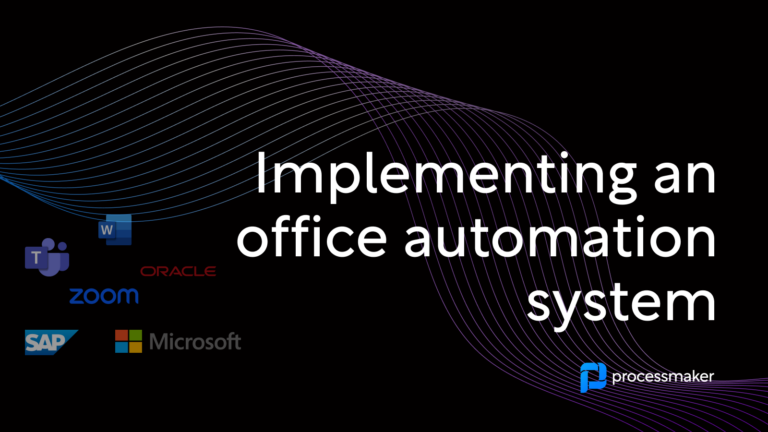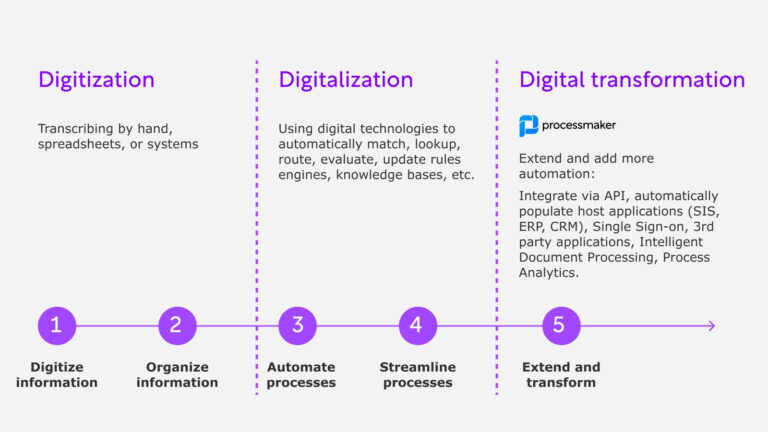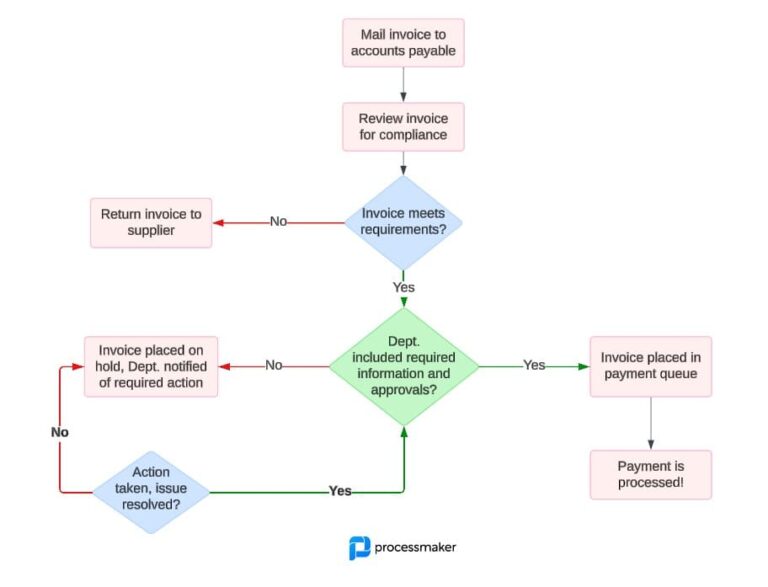When you can improve your work process efficiency while decreasing costs, you achieve work process optimization. The objective is to ensure work processes flow with maximum efficiency. You should apply automation, but only when your processes run as intended. Before doing so, optimize your work processes. Keep reading to learn more about work processes and several techniques for optimization.
What are work processes?
A work process involves repeatable tasks that must continue to reach an organizational goal. A workflow also involves repeatable tasks that are needed to run a specified job. Processes and workflows should be designed uniquely to reach their associated goals and tasks.
Why should you optimize your work processes?
With workflow optimization, you can decrease the workload and also save time. Here are a few other benefits listed below:
- Save on costs: When you can streamline your work processes, you will require less time from your staff and decrease the resources needed to complete the processes. As a result, your organization will likely save on money and resources which can be used elsewhere and more strategically.
- Bolster productivity: If employees take part in more efficient work processes, they can better manage their schedules since they will have a more accurate take on how much time is needed and where their input is required. Instead of wasting time on redundant tasks, they can focus on higher-value and more strategic work.
- Enhance communications: Optimized work processes enhance communication because employees will have more time to collaborate and get their processes completed on time. They won’t be bogged down with unnecessary activities.
- Improve time management: Since work processes will be less tedious, employees can improve their time management, prioritizing their most important tasks.
- Mitigate risk: Optimized work processes paves the way for better transparency so that employees can catch mistakes more quickly. In addition, optimized work processes may also contribute to better compliance with industry-related regulations.
How can you tell when it’s time to optimize your work processes? Well, answer the following questions to get the answer:
- Do processes take much longer than expected?
- Do mistakes occur consistently?
- Are there any bottlenecks?
- Do your work processes have tedious and wasteful steps?
- Are you meeting your desired objectives?
- Would it help if your work processes were optimized?
If you answered “yes” to any of the queries above, then perhaps it’s time to take a serious look and actual steps towards optimizing your work processes in an impactful way. In fact, you can probably already think of many options for improvement. Now, let’s review tactics for optimizing your work processes.
Connect your master data
An example of a process that would benefit from optimization is the new account opening. It seems pretty straightforward. A new customer fills out a myriad of forms; a business employee reviews the forms and makes the approval. However, it gets complicated when the forms are not sent to the right department or need multiple approvals. The approval team needs to manually enter all the application data such as social security numbers, phone numbers, and home addresses.
The high probability of manual errors occurs if the approval team doesn’t have all the data they need or the customer is unavailable. They might extend turnaround time leading to frustration all around. In addition, approval may or may not be made based on inaccurate data.
One of the most effective methods to remedy this scenario is to add master data. For instance, the company could create an automated form that executes other documents based on the submitted answers. This will decrease both manual errors and turnaround time. Further, the customer will appreciate the faster response time.
Incorporate conditional steps
If you have a good work process but still misses a few expectations, you don’t have to overhaul the entire process. Instead, you could create conditional tasks that would only execute under a specific scenario. Adding a conditional task helps to save from the time needed to create entirely new work processes. You may have work processes that generally work well but could benefit from a few tweaks here and there. So then, now the work processes have several paths to take based on the condition.
Create rankings
Rank your work processes based on the order of importance, and use a scale between 1 and 10 – 1 would be the most critical work process. Using a ranking system will help you determine which work process requires immediate attention and creates a snowball effect for achieving comprehensive work process optimization.
Map processes
It would help if you didn’t try to deploy all your work processes from memory alone – this is a recipe for error. Take time to map out and document every process from start to finish as a workflow. Not only does this offer proof, but it helps every stakeholder to remember every task.
Get feedback
Remember that stakeholders play a crucial role in completing your work processes efficiently. These are the people who have hands-on experience. There are usually many small details that would benefit from improvement but are often missed by all except those with experience. To illustrate, host a meeting to discuss how to improve every work process on your list and ask employees to submit their suggestions anonymously.
Automate your processes
Processmaker is an award-winning workflow solution that helps to optimize your work processes. Processmaker makes it easy to retrieve and store data from a central repository and automates steps in the work process with visibility through charts, reports, and graphs.
Make refinements
Work processes should be refined consistently as expectations change and consumer demands evolve. Working on the optimization process will give you practice and a start for how you intend to make refinements in the future. Keep in mind all of the steps above to ensure the most beneficial and relevant outcome.
In conclusion
Isn’t it time you figured out why your work processes are slowing down your daily operations instead of improving your bottom line? As your operations scale, your work processes should also improve to ensure all bottlenecks and tedious tasks are removed for better time and cost savings. Opening your work processes to optimization tactics not only helps to enhance employee engagement, but it also improves the customer experience, which can, in turn, strengthen profitability.





